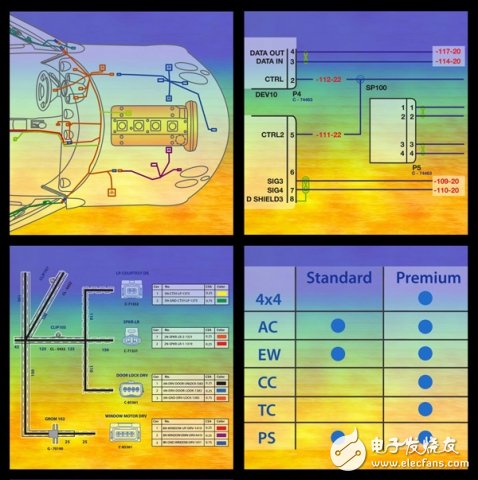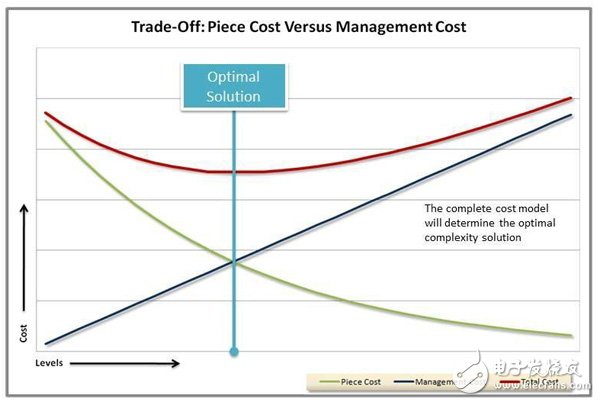In recent years, automakers have been working hard to win the favor of consumers, but with the entry of automakers from emerging markets, competition has become increasingly fierce. These emerging automakers have abandoned traditional solutions, adopted new tools and new processes, and benefited from them. This new design approach can shorten the cycle from product design to market, improve product quality, and enhance product competitiveness.
The new generation of consumers are not only more skilled at comparison when buying cars, but they are also more eager to have more choices. Automakers need to make major changes in their processes and internal functional organizations to cope with such new consumer habits. On the one hand, consumers want their vehicles to be more personalized through different configuration options, and on the other hand, they want to get these options without increasing the price. However, automakers hope to capture the market more effectively through "global models". While satisfying consumers' desire for arbitrary choice, they also need to meet different regulatory requirements and model change needs in different regions.
The diversity of automobile configurations requires not only the cooperation of the design and manufacturing departments, but also the after-sales maintenance department to provide corresponding maintenance and repair data for each vehicle. The surge in the complexity of automobile configurations and the resulting cost issues such as production scale, scrapping, certification, and documentation are now testing automakers. How to resolve the contradiction between the value of diversity and the cost of complexity has become one of the biggest challenges facing automakers today. The electrical design field feels this most deeply, because the "electrical system" is affected by almost all design decisions and customer choices: for example, different configurations may have hundreds of millions of different permutations and combinations.

Figure 1 Provides corresponding maintenance and repair data for each vehicle

Figure 2 Trade-off: Price Cost Versus Management Cost
The process of converting requirements into products in electronic/electrical system design is quite complex and is the core of the entire system engineering. First, the requirements are analyzed and described into features, which are then broken down into functional modules. The functional modules together form a logical system, which is interconnected by thousands of analog or digital signals. The logical system is physically installed in the vehicle, and its signals and devices are labeled with options and models, reflecting the product plan (instructions on functions and models - different by region). It is then integrated and designed by a wide range of supply chain manufacturers before the manufacturer (OEM) performs final integration and certification. In addition, design change management in this process is always a challenge. Finally, repair and warranty related to brand image must also provide corresponding data for each specific vehicle (enable through legislation). Easier said than done!
It is clear that the hybrid approach of using a series of internal solutions and multiple commercial software in the past can no longer meet the needs of the automotive industry. How to resolve this contradiction has become a hot topic in the automotive industry, and because of this, the characteristics of a solution that can meet the requirements of electronic/electrical complexity have gradually become clear. First, the transformation from file-based design processes to data-based and cross-domain integrated design processes is imperative. This transformation allows design to be carried out at a higher level of abstraction. After importing the corresponding design model and design constraints from different aspects, the electrical design of the car will be able to be completed automatically in a comprehensive manner. It can also integrate the intellectual property (IP) designed by the enterprise into the core of the solution, thereby achieving continuous improvement. This transformation shortens the product design cycle and provides a feasible method for designers to evaluate multiple design options in terms of configuration complexity. In addition, modern IT solutions such as service-oriented architecture (SOA) and open services for lifecycle collaboration (OSLC) also provide a data platform that is easier to share and view (shared across the entire platform, not limited to the single domain where the data was created).
Fortunately, commercial software that meets these requirements is emerging to support the modern electronic/electrical design process. For established automakers, it is critical to adopt these new technologies and gain an advantage over emerging competitors by adding process advantages to their proven cost advantages.
Previous article:How a Buck Regulator Becomes a Smart Dimmable LED Driver (Part 3)
Next article:What kind of environmental performance should a good connector have?
- Popular Resources
- Popular amplifiers
- High signal-to-noise ratio MEMS microphone drives artificial intelligence interaction
- Advantages of using a differential-to-single-ended RF amplifier in a transmit signal chain design
- ON Semiconductor CEO Appears at Munich Electronica Show and Launches Treo Platform
- ON Semiconductor Launches Industry-Leading Analog and Mixed-Signal Platform
- Analog Devices ADAQ7767-1 μModule DAQ Solution for Rapid Development of Precision Data Acquisition Systems Now Available at Mouser
- Domestic high-precision, high-speed ADC chips are on the rise
- Microcontrollers that combine Hi-Fi, intelligence and USB multi-channel features – ushering in a new era of digital audio
- Using capacitive PGA, Naxin Micro launches high-precision multi-channel 24/16-bit Δ-Σ ADC
- Fully Differential Amplifier Provides High Voltage, Low Noise Signals for Precision Data Acquisition Signal Chain
- LED chemical incompatibility test to see which chemicals LEDs can be used with
- Application of ARM9 hardware coprocessor on WinCE embedded motherboard
- What are the key points for selecting rotor flowmeter?
- LM317 high power charger circuit
- A brief analysis of Embest's application and development of embedded medical devices
- Single-phase RC protection circuit
- stm32 PVD programmable voltage monitor
- Introduction and measurement of edge trigger and level trigger of 51 single chip microcomputer
- Improved design of Linux system software shell protection technology
- What to do if the ABB robot protection device stops
- Pickering Launches New Future-Proof PXIe Single-Slot Controller for High-Performance Test and Measurement Applications
- Apple faces class action lawsuit from 40 million UK iCloud users, faces $27.6 billion in claims
- Apple faces class action lawsuit from 40 million UK iCloud users, faces $27.6 billion in claims
- The US asked TSMC to restrict the export of high-end chips, and the Ministry of Commerce responded
- The US asked TSMC to restrict the export of high-end chips, and the Ministry of Commerce responded
- ASML predicts that its revenue in 2030 will exceed 457 billion yuan! Gross profit margin 56-60%
- Detailed explanation of intelligent car body perception system
- How to solve the problem that the servo drive is not enabled
- Why does the servo drive not power on?
- What point should I connect to when the servo is turned on?
- What are the specific differences between FreeRTOS and Linux?
- The Painful Experience of DSP Connecting to Emulator
- Is a touch oscilloscope necessary? It feels much faster to operate
- Simplifying Voltage and Current Measurements in Battery Test Equipment
- Knowledge about op amp and bandwidth
- [MM32 eMiniBoard Review] + SysTick Second Timer
- DSP realizes the source code of the water light style
- Controlling Hardware with Python - Low Voltage Startup and Reliability Testing
- HDB3 Codec Design Based on FPGA.pdf
- MicroPython has made several adjustments to USB functions

 EL2044CSZ
EL2044CSZ












 京公网安备 11010802033920号
京公网安备 11010802033920号